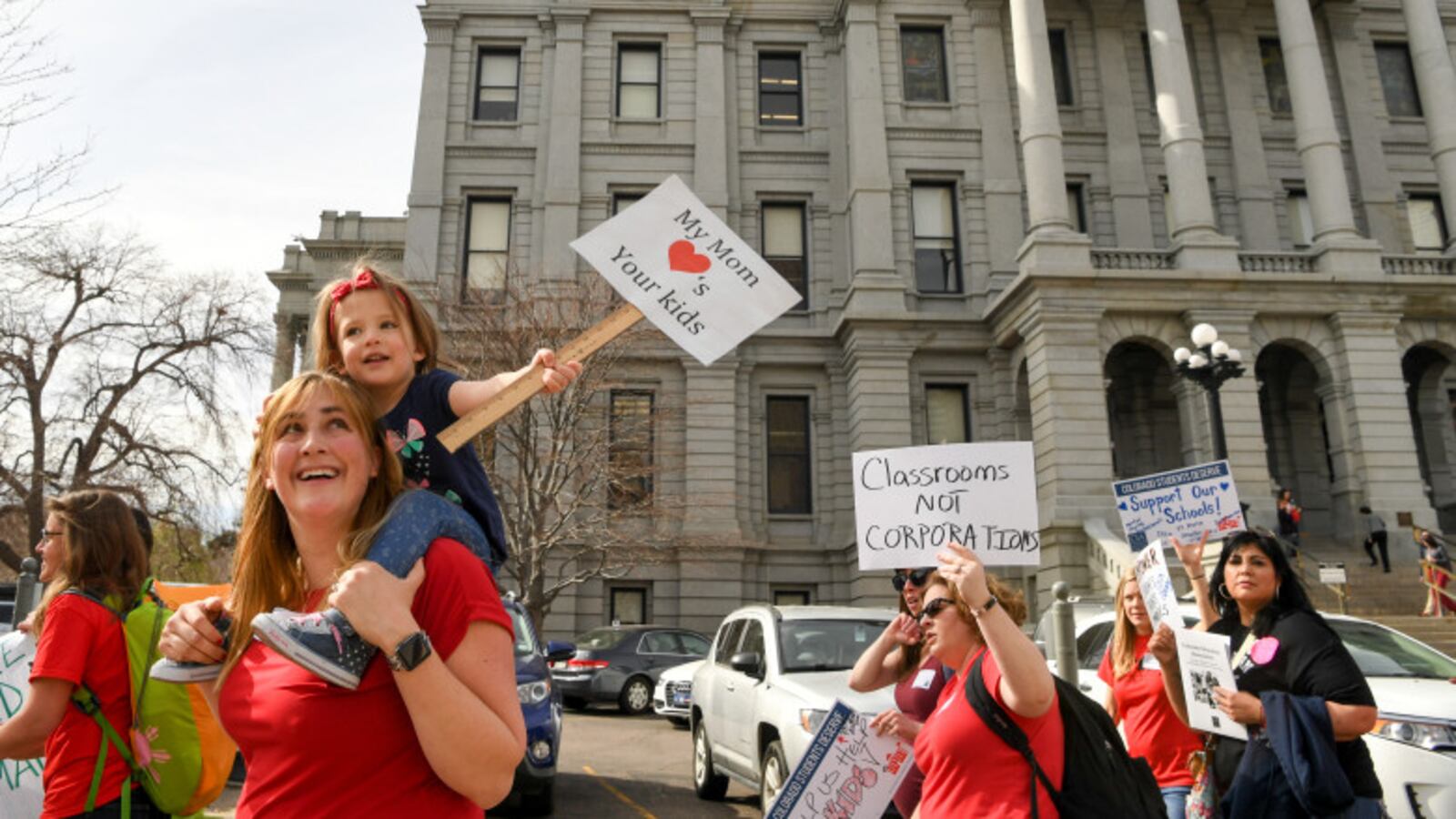Most school districts asking voters to approve local tax increases for schools this November have one thing in common: They are promising that money will go to raise teacher pay.
Polls show voters are inclined to support increasing teacher pay this year, following several high-profile walkouts across the country where teachers shared their struggles with working multiple jobs, and paying out of their own pocket to outfit their classrooms or help feed hungry students.
“Right now you got a pretty clear majority of people saying, teachers deserve more,” said Keith Frederick, who conducts polls for school districts and other government bodies to determine if they should put requests on the ballot. “Voters are very interested, these days anyway, they’re interested in their community schools, higher teacher pay.”
Many officials from those districts say the pay they offer simply isn’t keeping up with nearby districts, meaning a harder time recruiting and retaining teachers. Salaries and employee benefits take up the largest chunk of school district budgets.
School districts in Aurora, Jeffco, Westminster, Douglas County and Sheridan are among the districts making a local request this November. Ballots have been mailed out this week, and voters will start to decide if the request is worth a local tax increase.
Statewide, teacher pay in Colorado ranks below national average.
But measuring how competitive teacher compensation actually is among districts can be complicated. Surveys and studies show that salaries alone do not account for what keeps teachers in their job or what makes them leave. And how teachers get paid in some districts is complicated, based sometimes on their evaluations, or performance of their students, or school, or the difficulty in filling the job they’re in.
Then there are other work conditions that can be considered benefits. The school district based in Brighton moved this year to a four-day school week after failing to pass several tax measures. Although the change will only result in small savings, the district claims it’s a new way to attract teachers without having to raise pay.
But looking at state data for last year, most districts that have the highest starting salaries or average pay for teachers, including Cherry Creek, Boulder, and Poudre, also have the lowest teacher turnover.
Average teacher pay and teacher turnover rates
*Source: Colorado Department of Education. Districts in bold have a tax request tied to teacher pay on this November’s ballot.
None of those three districts are requesting local tax increases this year, but their neighboring districts, including in Douglas County, Elizabeth, Jeffco and Thompson, are.
The contrasts between districts can be large. In the neighboring Poudre and Thompson districts, the difference in the average pay is about $5,000, and the difference in starting salaries is even larger. Higher-paying Poudre has a teacher turnover rate of less than 10 percent. In lower-paying Thompson, the turnover rate is about 17 percent.
The Thompson district is requesting a $13.8 million mill levy override to raise teacher pay, and to purchase new books and technology. The district is also requesting a $149 million bond for building maintenance, security improvements and a new school.
Some of the districts requesting tax increases this year have failed to win voter approval before, including Thompson, Westminster and Jeffco. Although several factors including the political culture of the districts influence the vote, highlighting what voters value — like boosting teacher salaries — might improve the chances of voter approval.
Although most of the local tax measures don’t face organized opposition, criticism of a statewide tax measure for schools might impact other questions down the ballot. Critics of the statewide school measure have said that districts are not under obligation to use the money to pay teachers more, and worry that new money could go into administrative costs instead.
Some districts are trying to create assurances for voters.
Aurora Public Schools agreed to language in its contract with the teachers union that requires the district to set aside at least $10 million from new mill levy revenue, if approved, to give teachers a 3 percent raise starting in January. Remaining money would go into creating a new teacher salary schedule.
The Jeffco school board passed a resolution that commits a certain percentage of new tax revenue for teacher pay. The tax measure also includes language prohibiting use of that revenue for administrative budgets.
Even if districts do use the money for increasing salaries, most districts likely have to negotiate with their employee unions to decide just how to do it — whether it’s raising base salary, giving across-the-board raises, or creating new systems that reward certain teachers.
Several school boards across the state also passed resolutions committing to certain items that would get funding first if voters approve the state ballot request for new school funding. One common, top priority among those is improving salaries.
Denver’s school leaders said they would use the largest portion of the proposed new state revenue for teacher salaries. Negotiations there have been heated, as district leaders insist the state measure needs to pass in order for the district to come closer to meeting the union’s demands.

